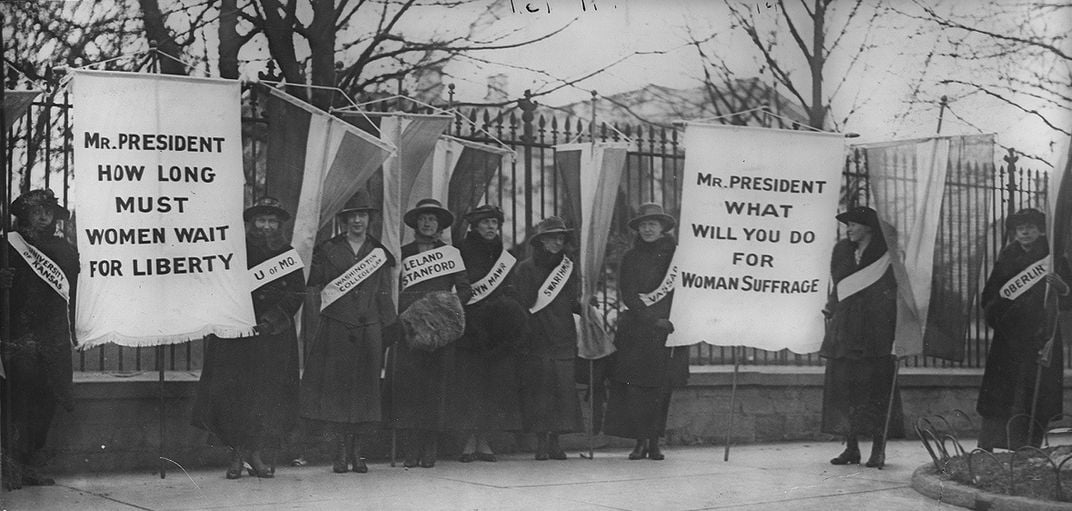The U.S. Finally Has a National Monument That Honors Women’s History
144 Constitution Avenue is now one of the women’s movement’s most significant sites
/https://tf-cmsv2-smithsonianmag-media.s3.amazonaws.com/filer/57/34/573446c9-3692-4101-8844-78c57c265df6/sewall_belmont_house_courtesy_sewallbelmontorg_.jpg)
Want to visit a national monument to women’s history? Just yesterday, that wasn’t an option—though the National Park system has three congressionally chosen parks that highlight women, the President has never designated a monument in celebration of women. That changed, though, when U.S. Secretary of the Interior Sally Jewell announced today that President Obama has designated the former headquarters of the National Woman’s Party as a monument.
Now formally called the Belmont-Paul Women’s Equality National Monument, the site is one of Washington, D.C.’s oldest residences. During the 20th century, it became home to the National Woman’s Party, a group of women who fought tirelessly for universal suffrage despite taunts, threats and repeated imprisonment for their actions.
The NWP was led by Alice Paul, born into a prominant Quaker family in New Jersey, who was radicalized during her time in England working with suffragettes who fought hard for women to gain the right to vote. Paul was convinced that women should go to the top of the U.S. political establishment and ask President Woodrow Wilson to support their cause, so she installed so-called “silent sentries” outside of the White House gates to picket for women’s rights.
Today, it seems almost incomprehensible that silent women holding up signs with slogans like “Mr. President, What Will You Do For Woman Suffrage?” would be heckled or beaten, but Paul’s actions and those of her fellow suffragists were nothing short of revolutionary at the time. Not only were the women at the White House gates the first permanent protesters of their kind, but they threatened the status quo in the nation’s capital and reminded one and all about both the shame of the United States’ refusal to allow women to vote and the political and social independence women might claim once they could cast their ballots.

The NWP’s headquarters at 144 Constitution Avenue had long been a place of for political foment. After Washington, D.C., was invaded by the British in 1814, it was the only place where Americans resisted the city’s captors. In retribution, it was burned to the ground along with portions of the U.S. Capitol, the White House and the U.S. Treasury. It’s fitting, then, that Paul bought the house, which was rebuilt after the war, for her beloved partyin 1929. There, the NWP authored hundreds of pieces of legislation for women’s rights and lobbied for the passage of the ill-fated Equal Rights Amendment before the organization finally stopped lobbying in 1997, and the building was converted into a public museum and archive.
Appropriately, the United States’ newest national monument—a place where so much work was done on behalf of equal rights for women—was announced on Equal Pay Day. That’s the date in the current year that represents the extra days a typical full-time woman worker would have to work to make the same amount of money a man did in the previous year. Women may still make only a fraction of what men do, but perhaps some day they’ll achieve parity in national monuments.
/https://tf-cmsv2-smithsonianmag-media.s3.amazonaws.com/accounts/headshot/erin.png)
/https://tf-cmsv2-smithsonianmag-media.s3.amazonaws.com/accounts/headshot/erin.png)